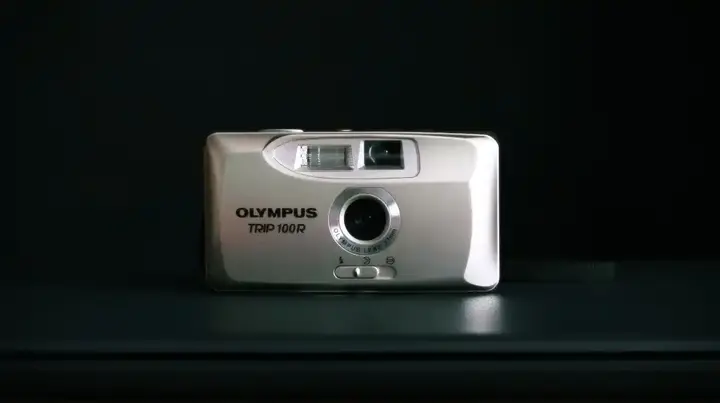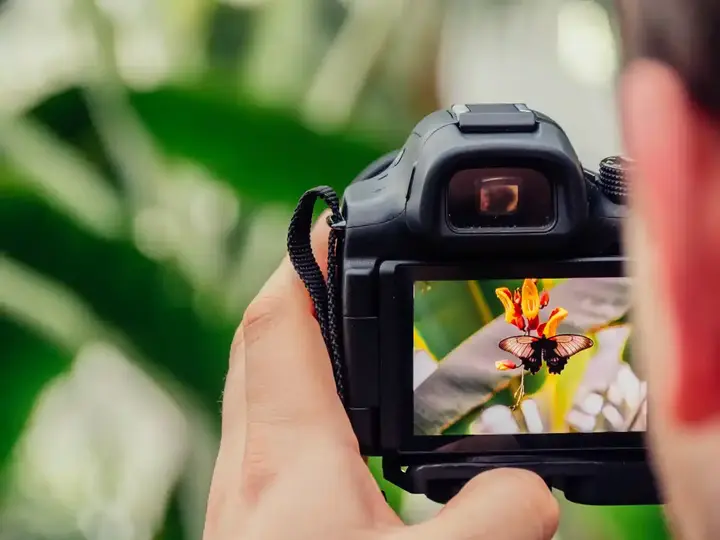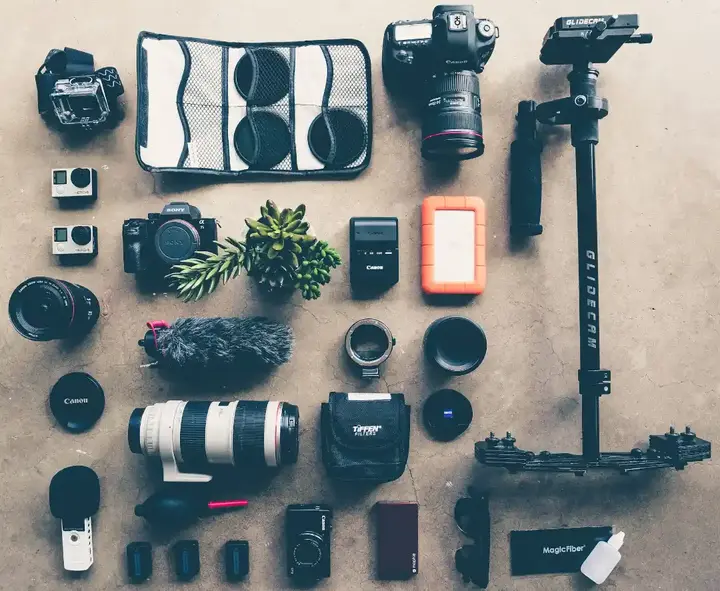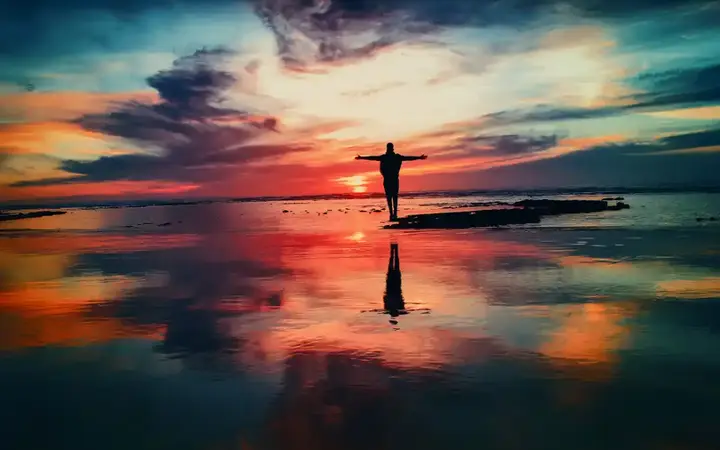For an unforgettable photo – your simplified guide to professional photography with minimal potential
Certainly, you see many creative images online, and you wonder how these images are taken even though these photographers are quite ordinary people, and many of them even mention that these images were taken by mobile, in types that are not expensive or high-quality.
Let's tell you; even if you don't have the latest cameras or lenses, you can take great photos simply by understanding a few basics and using creativity.
And the best camera is the one you always carry with you. So, enjoy filming and don't let the lack of equipment stop you!
Through the following lines, we will discuss the factors that lead to professional photos with the least potential, even through your personal phone...
Recommend
First learn how to have a glance eye!

Professional or creative images are only human or natural moments recorded by a tool represented by the camera, but does the camera work alone in order to capture those beautiful moments? Of course not. So your eye is the first tool you should train to understand the surrounding environment as well as events.
Train yourself several times so that you can catch beauty with your eyes first. Indeed, it is not as difficult as we have said before, but it needs to be practiced.
See lots of photos

Create inspiration by remembering and benefiting from the experiences of others.
Ask yourself; what pictures do you like to see? Are they natural images? Or pictures of humans in multiple modes? Or else?
There are a lot of professional and creative photographers who constantly display their work through social networking sites, for example, specialized sites, and so on.
This step also comes from the process of training both the eye and the mind, which is very important for boosting your memory.
Learn the basics of photography

No matter how simple your tools are, you can take stunning photos if you understand the basics. Let's explore together the most important concepts that will help you improve your skills...
Important note: Most of these concepts and factors are found in good mobile cameras. So it's as simple as to start hands-on training with mobile.
Lighting: Image Spirit
She is the key to any good image. Always try to shoot in natural daylight if possible. Avoid shooting in direct light to avoid harsh shadows.
Natural light: is the best friend of the novice photographer. Use it as much as possible, especially early in the morning or afternoon when the light is softer.
Artificial light sources: LEDs or flash can be used to create different effects.
Exposure compensation: This is a feature in the camera that allows you to adjust the amount of light that reaches the sensor.
configuration: Arranging elements
The way elements are arranged in your photo significantly affects their effect. Use the two-thirds rule and experiment with different angles.
Two-thirds rule: divide the image into nine equal sections with two horizontal lines and two vertical lines. Placing points of interest on intersections or on the lines themselves creates a balanced composition.
Lead lines: These are imaginary lines that direct the eye inside the image. Use them to create a feeling of movement or depth.
Frame: Use natural or artificial elements to frame your photo's subject.
Focus: Make the topic clear
Make sure the subject of your photo is clear and focused. Use multiple focus points or manual focus for best results.
Focus point: is the area that will be sharp and clear in the image.
Depth of field: The distance between the nearest point and the farthest point that forms sharp in the image.
Manual focus: It gives you more control over concentration, but requires some practice.
Shutter speed, aperture and sensitivity
Shutter Speed: Controls the amount of time the sensor remains exposed to light. A slower shutter speed lets in more light, but increases the risk of camera shake.
Aperture: The size of the aperture in the lens that allows light to enter. A wider aperture (less f) lets in more light and creates a lower depth of field.
Sensitivity (ISO): A measure of how sensitive the camera sensor is to light. The higher the sensitivity, the less light it takes to take the image, but this leads to increased noise in the image.
Types of shots
Changing the shooting angle can turn a normal photo into a featured one. Try shooting from low or high angles.
Close-up: Focuses on small details.
Wide shot: Shows the entire scene.
Low or high angle shot: Adds a different perspective to the image.
For example, here are some creative ideas in the process of taking pictures...
Use natural light: Look for large windows or glass doors to light up your photos naturally.
Use mirrors: Mirrors can add depth and interest to your photos.
Use a simple background: a simple background can make the subject of your photo stand out.
Use accessories: Simple accessories like flowers or books can add a personal touch to your photos.
How to choose a phone with a good camera for shooting?

Choosing the perfect smartphone for photography can be a daunting task given the many options available in the market. Here are some factors to consider when making your decision.
1. Lens resolution:
Megapixel count: Although it is not the only factor affecting image quality, it gives an initial indication. The more megapixels, the more detail can be captured.
Focal Size: Affects how much you zoom out and out. A lens with a wide dynamic range gives you greater flexibility in capturing diverse images.
2. Aperture: F value: A larger aperture (smaller f value) allows more light in, making images brighter especially in low light.
3. Image Stabilization: OIS (Optical Image Stabilization): Helps reduce camera shake, resulting in sharper images, especially when shooting by hand.
4. Programs and features:
Night Shooting Mode: Improves image quality in low-light conditions.
Portrait mode: isolates the subject from the background and adds a blurry effect.
Professional shooting mode: Gives you more manual control over camera settings.
Artificial intelligence: AI is used to improve image quality and identify different scenes.
5. Other specifications:
Image Processor: Affects the speed of image processing and the application of effects.
Sensor size: The larger the sensor, the more light can be captured, resulting in higher quality images.
![]()
Success Guide - How do you design mind maps?
Success Guide - How do you design mind maps? more- ADVERTISEMENT
![]()
How did you start blogging music?
How did music notation begin more- ADVERTISEMENT
![]()
3 inspiring success stories in difficult times
Fred DeLuca’s journey from washing dishes to founding Subway proves that persistence can turn a simple idea into a global empire, while Steve Jobs and Paulo Coelho show how resilience in the face of setbacks can lead to world-changing success and creative brilliance. more- ADVERTISEMENT
![]()
Chasing the Stars: A Journey Towards Becoming an Astrophotographer
Chasing the Stars-A Journey to Becoming an Astrophotographer more- ADVERTISEMENT
![]()
How to reduce risk and keep your business stable?
Effective risk management helps protect your business assets, improve decision-making, and avoid costly disruptions. By identifying, assessing, and addressing potential risks, you can ensure smoother operations and even uncover new opportunities. Regular updates, employee involvement, and proper tools can keep your risk strategy strong and your business steady. more- ADVERTISEMENT
![]()
Sacred places in the Andes: 7 secrets of Machu Picchu
Machu Picchu isn't truly the lost city of the Incas, and it's not as forgotten as once believed—locals were living there when rediscovered. Many marvels are hidden underground, and if you're up for a sweaty climb, you can skip the pricey bus and enjoy epic views for free. more- ADVERTISEMENT
![]()
5 things you should remember when you don't believe in yourself
5 Things to Remember When You Don’t Believe in Yourself more- ADVERTISEMENT
![]()
Seeds of "dandelion" interstellar
Seeds from An Interstellar “Dandelion” more- ADVERTISEMENT
![]()
The art of observation – the ability to pay attention to small things
The art of observation is about noticing the overlooked, celebrating what makes people unique, and connecting through shared wonder. It's a simple yet powerful way to deepen relationships, spark creativity, and stay human in a distracting world. Noticing the little things? That’s where the magic begins. more- ADVERTISEMENT
![]()
The most famous data leaks in history - a list of wonders!
Big names get hacked too—Yahoo, LinkedIn, Facebook, and Canva all suffered massive data breaches, exposing millions of users’ info. These attacks didn’t just hurt reputations—they shook global cybersecurity and pushed companies to step up protection, while users were urged to change passwords and enable two-factor authentication. more- ADVERTISEMENT





















